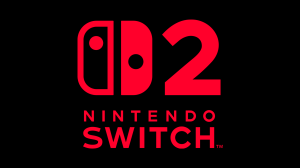In 2014, audiences worldwide were stunned to learn Studio Ghibli was halting production on future films following the retirement of its most famous creator, Hayao Miyazaki. The director has since exited retirement to make one last film, but fans of Studio Ghibli do not have to wait until 2020 to experience the same kind of whimsical stories once more. In 2017, Mary and the Witch’s Flower has made its arrival, and the film is a lush realization of everything Studio Ghibli did right.
Videos by ComicBook.com
Based on the novel The Little Broomstick, Mary and the Witch’s Flower takes Mary Stewart’s children’s tale and injects the magical story with striking beauty. The film is the first feature produced by Studio Ponoc, an animation firm created by former Studio Ghibli producer Yoshiaki Nishimura. The film was lifted off the ground by a handful of Miyazaki’s disciples, and director Hiromasa Yonebayashi proves he listened to every one of his mentor’s lessons with this charming story.
The film follows a young girl named Mary Smith as she stays with her great-aunt Charlotte while her parents are away on work. The red-headed girl is terribly kind, but Mary’s boredom in the rural English countryside leaves her too eager to help around. Mary just wants to be helpful, but the girl cannot seem to do anything right. Frustrated with herself, she finds her world flipped upside down after she sees a black cat turn grey and follows the strange feline into an unwitting adventure.
After entering the forest, Mary stumbles upon a very rare flower and shy broomstick. The girl comes into possession of Fly-by-Night, a special flower coveted by witches as it gives whoever touches it strong magical powers. The flower gives Mary a much-needed reprieve from the boredom she has been plagued by, but her journey takes a turn when she finds herself trapped in a magical institution with dwindling powers.
Like Studio Ghibli before it, Studio Ponoc has mastered the art of infusing children’s tales with awe-inspiring whimsy. Fans of Miyazaki will rejoice in seeing a new company embrace the director’s gentle ideas, but Mary and the Witch’s Flower is not so deeply entrenched in Studio Ghibli’s tenants that it becomes a carbon copy. It is true that the film closely resembles Miyazaki’s work; for some fans, the similarities may be offputting, but the Studio Ponoc film does invest energy in areas Studio Ghibli often overlooked. For instance, the villains in Mary and the Witch’s Flower are painstakingly wicked and find few sympathizers by its end.
At its core, Mary and the Witch’s Flower proves it is a worthy successor of Studio Ghibli thanks in large part to its heart. The joyful film takes pride in its fantastical world and wondrous elements. There is no shortage of invention in Mary and the Witch’s Flower, and it asks audiences to explore its world as much as it does Mary. To call the film a knock-off of any Studio Ghibli film would be a grave mistake, and Studio Ponoc proves it can bring its own enchanting stories to life with this bewitching tale.








